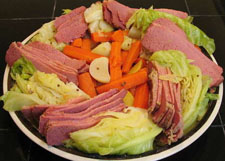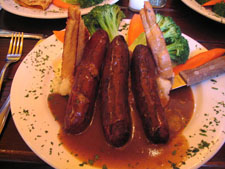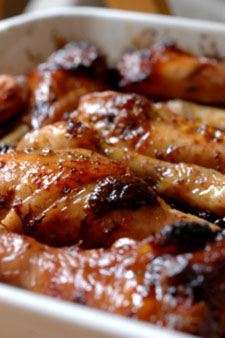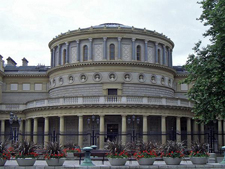|
Things to do in Dublin
-
Chester Beatty Museum
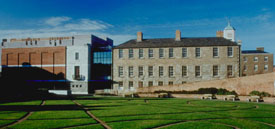
The Chester Beatty Library was
started in Dublin, Ireland in 1950 to hold all the collections
of mining mogul, Sir Alfred Chester Beatty, located in the
Dublin Castle in 2000, the 125th anniversary of Beatty's death;
and named the European Museum of the Year in 2002. His
collection is exhibited in two collections called "Sacred
Traditions" and "Artistic Traditions", with both showing
manuscripts, miniature paintings, sacred texts and art on paper
from many of the world's greatest western and oriental religions
and many secular relics. It is one of the most prominent sources
for scholarships in the Old and New Testaments; as well as
containing one of the finest collections of Far Eastern and
Islamic artifacts in the world. Included in the collection is
the Gospel of Mani, thought to be the final relic from
Manichaeism. Although, in reality, it is only part of the first
section of the gospel that contained 22 sections. The Lonely
Planet has said that this magnificent library/museum is not only
the best in Ireland, but one of the best in Europe, which
contains both the library and museum that themselves hold huge
great collections of miniature paintings, drawings, rare books,
decorative arts, prints and manuscripts. This fabulous library
has numerous displays that have opened a window into the
spectacular treasures from the greatest cultures and religions
of the world. This artistic collection has relics from countries
in North Africa, Asia, the Middle East and Europe, that will
give visitors a visual smorgasbord. Included are magnificent
Egyptian papyrus texts, exquisite copies of the Bible, Qu'ran,
European medieval and renaissance manuscripts, Chinese dragon
robes, Japanese woodblock prints, Buddhists paintings, Persian
and Turkish miniatures and more. In its diverseness, this
fantastic collection contains the wealth of human creativity
from 2700 BC. to the current times. The library continues to be
called the most distinguished collection of books and
manuscripts acquired by a private collector in the 20th century
and in its western treasures has numerous sources on papyrus of
the Bible and a large number of Manichean texts. The Biblical
papyri, that have been dated from around 100 BC. to 300 BC.,
contain the earliest copies known of the Book of Revelation, the
Acts of the Apostles, the four gospels, the epistles of St. Paul
and other ancient Old Testament fragments. There are Western
European and Armenian manuscripts from the medieval, renaissance
and modern periods, prints, early and fine books and bindings
complete the absolutely remarkable conspectus for the arts of
manuscript production and printing from various cultures and
periods. In the Islamic collection, there are over 6000 relics,
the majority being manuscripts and single page paintings and
calligraphies; that contain over 260 complete and partial
Qu'rans, with some dating for the late 8th and 9th centuries and
includes the works of the best calligraphers of the Islamic
world. The East Asian collection contains a marvelous number of
albums and scrolls from China, the biggest collection of jade
books from the Imperial Court that exists outside of China, and
a big collection of rare rhinoceros horn cups, decorative relics
and textiles. In the Japanese gallery there are many splendid
painted scrolls from the 17th and 18th centuries, woodblock
prints by Hiroshige and Hokusai and others, plus many decorative
arts items.
-
Historical Walking Tours of Dublin
The best way to learn about
a city and its inhabitants is to take a walking tour, where your
guide will almost certainly tell you about the best and most
popular spots are, the best places to eat, or sleep and anything
else you would like to know. The guides are always familiar with
the city they guide you through, and in Dublin, you get the
added benefit of having history majors that know the down and
dirty about the many people, places and things that have piqued
your curiosity and brought you there. Dublin is such a wonderful
city, as old as most in Great Britain, and full of great
restaurants and bars that will also give you some exciting
stories to help you decide what and where you would like to go.
It is the best way to start your visit to a city you have never
visited, and it might be a long time before you come back, so
the first visit should be the most selective. The
Historical Walking Tours of Dublin are conducted by history
graduates of Trinity College Dublin, and will take you to the
main highlights of the Irish history that exists in this city.
Included are the development of Dublin, what kinds of influence
the American and French Revolutions had on the country and city,
the terrible potato famine of 1845-1849 that sent so many of the
Irish to the shores of a new country with great opportunities
and freedoms, the rising in 1916, their war of independence, the
partition and finally ends with the Northern Ireland peace
process and the country of Ireland today. They take you to the
Old Parliament House, Trinity College, City Hall, Temple Bar,
Four Courts, Wood Quay, Christ Church Cathedral and Dublin
Castle.
-
Kilmainham Gaol Historical Museum
Kilmainham Gaol was a prison
in Kilmainham district of Dublin, Ireland that has now been
turned into a museum and operated by the Office of Public Works,
OPW, since the middle 1980s. The gaol, or prison, has been an
important place in Irish history, with many leaders of the
rebellions being imprisoned here, with numerous being executed
by the British and after 1923, by the Irish Free State. The jail
was first built in 1796, and it was called the new gaol so that
people would know that it wasn't the old gaol, which was a
terrible dungeon, noisy and foul, and a few hundred yards from
the new. Officially called the County of Dublin Gaol, it was run
by the Grand Jury for County Dublin, and was its jail for over
140 years, with its cells holding some of the most famous people
in Irish history of its struggle to be free from the rule of
Great Britain. The leaders of the 1916 Easter Rising were sent
here to be executed, and through the years, there have been many
young children brought here for stealing or petty theft, the
youngest recorded being just 7 years old. Often, the adult
prisoners would be sent to Australia to build that country. And
it wasn't segregated, everyone, men, women and children sent
together, with only 5 in a cell, and a single candle for light
and heat; meaning that the majority of their time was spent in
the dark and cold moldy damp stone places. It was discontinued
as a prison in 1924, and after a long and tedious renovation, it
contains the museum of the history of Irish nationalism and
gives tours of the former prison building. The art gallery
housed on the top floor has paintings, jewelry and sculptures of
prisoners from all across the country. The poor conditions that
the women prisoners had to endure, even though it was during a
time when the "weaker sex" had a protective attitude, their
plight was consistently worse that that of the men. In 1809, the
inspector stated that male prisoners had iron bedsteads, while
the women slept on the flagstones in the cells and common halls;
and still, 50 years later, the conditions for women had changed
little, with constant overcrowding. Although one of the largest
unoccupied jails in Europe, it is still full of history and has
been referred to as the "Irish Bastille". When it opened, there
were many public hangings done there, but after the 1820s, it
wasn't often that one was done, public or private.
|







